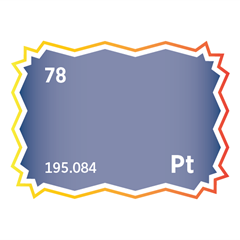The F-47 Fighter Jet
F-47: Trump’s Next-Generation Air Dominance Platform
The unveiling of the F-47 fighter jet marks not only a leap in American air power but also a sharp reminder of the critical mineral foundations underpinning next-generation defence technologies. From stealth coatings and radar systems to high-thrust engines and advanced avionics, sixth-generation platforms rely on a secure and resilient supply of rare earth elements and strategic metals. Stealth aircraft like the F-47 depend on rare earth elements such as neodymium, praseodymium, dysprosium, and terbium for high-performance magnets, actuators, and radar systems, along with strategic metals like titanium, tungsten, and niobium for structural strength, heat resistance, and stealth coatings. As the United States accelerates development under the Next Generation Air Dominance (NGAD) programme, securing access to these critical inputs is now as essential to national defence as the platforms themselves, making critical minerals a frontline issue in 21st-century geopolitics.
The F-47 Fighter Jet: Trump’s Next-Generation Air Dominance Platform
On 21 March 2025, President Donald Trump announced that Boeing had secured the contract to develop the F-47, the United States’ first sixth-generation fighter jet. Delivered during a high-profile Oval Office briefing, the announcement marked a pivotal moment in American military aviation and reinforced the nation’s strategic commitment to maintaining air superiority amid intensifying global competition, particularly from China and Russia.
Designed to succeed the F-22 Raptor, the F-47 represents a transformational leap in air combat capability. It will form the backbone of the U.S. Air Force’s next-generation fleet, operating alongside the B-21 bomber to ensure dominance in contested airspace and deliver a decisive edge against increasingly sophisticated adversaries.
While the future of aerial warfare continues to spark debate, particularly regarding the balance between manned and unmanned systems, the Department of Defense has committed to a hybrid approach. By integrating advanced crewed platforms with autonomous systems, the United States is pursuing greater tactical flexibility, enhanced operational resilience, and long-term deterrence across multi-domain theatres.
The F-47 is central to this strategy. It combines next-generation capability with industrial-scale production potential, reinforcing the importance of sustained investment in sixth-generation technologies as the cornerstone of continued U.S. strategic advantage in an evolving global security environment.
During the announcement, President Trump was joined by Defence Secretary Pete Hegseth and Air Force Chief of Staff General David W. Allvin. Together, they confirmed the aircraft would carry the F-47 designation, a label that drew considerable attention, coinciding symbolically with Trump’s position as the 47th President of the United States.
The 20 billion dollar contract award represents a significant win for Boeing over Lockheed Martin, the long-time manufacturer of the F-35. The announcement triggered immediate market response, with Boeing’s share price rising by approximately 5 percent, while Lockheed Martin’s fell by nearly 6 to 7 percent.
Although detailed specifications remain classified, the F-47 is being positioned as the world’s first operational sixth-generation fighter. It is expected to deliver unmatched lethality and survivability, incorporating breakthrough advancements in stealth, propulsion, sensors, and networked warfare to outpace any known or emerging threat.
The timing of the announcement is especially significant, coming as China accelerates development of its own sixth-generation fighter platform. In response, the F-47 is designed to ensure U.S. air superiority well into the future, delivering both technological overmatch and enhanced combat readiness in a more competitive strategic environment.
According to the Department of Defense, the F-47 is not only a leap forward in capability, it is also a reaffirmation of American power projection and alliance assurance. It signals to allies and adversaries alike that the United States remains committed to maintaining freedom of action in the air domain through superior technology and force integration.
As the centrepiece of the U.S. Air Force’s Next Generation Air Dominance (NGAD) programme, the F-47 plays a foundational role in the future of air combat. NGAD adopts a systems-of-systems architecture in which the F-47 operates as the primary crewed fighter, supported by unmanned Collaborative Combat Aircraft (CCAs), currently under development by Anduril Industries and General Atomics.
This programme reflects a strategic shift toward distributed, integrated combat capabilities that can adapt to evolving threats. With China and Russia advancing their own sixth-generation programmes, the F-47 is designed to preserve long-term U.S. air dominance through a combination of cutting-edge innovation, scalable force design, and global operational reach.
Design, performance, and systems integration
The F-47 incorporates next-generation stealth technology that significantly reduces its radar cross-section, making it exceptionally difficult to detect. Initial renderings released by the U.S. Air Force depict a streamlined, angular fuselage featuring a stealth-optimised nose, bubble canopy, and chiseled chine. Distinctive canards and upward-angled wings indicate enhanced aerodynamic performance and a departure from conventional stealth profiles.
In terms of flight performance, the F-47 is expected to exceed Mach 2 and offer a significantly extended range compared to the F-22, which currently surpasses 1,850 miles with external fuel tanks. The aircraft is engineered for high manoeuvrability, rapid response, and sustained effectiveness in high-threat environments.
The platform also features advanced systems integration, combining cutting-edge sensors, next-generation sensor fusion capabilities, and highly efficient engines. It is designed as a manned aircraft that will operate alongside autonomous “loyal wingman” drones, increasing mission flexibility, situational awareness, and combat reach through manned-unmanned teaming.
Development and production
President Trump disclosed that an experimental version of the F-47 has already been in secret flight testing for nearly five years, with initial results reportedly demonstrating clear superiority over foreign systems. The aircraft is being designed not only for combat effectiveness but also for affordability, adaptability, and scalability.
General Allvin has confirmed that the F-47 will be more cost-effective and versatile than the F-22, with planned improvements in stealth, range, logistics, and procurement efficiency. The U.S. Air Force intends to field a larger fleet, ensuring sufficient numbers to meet global operational requirements.
Although no official production schedule has been released, the President has committed to commencing fleet construction within his current term. Production is already underway, and deliveries are expected over the next several years.



Meet the Critical Minerals team
Trusted advice from a dedicated team of experts.

Henk de Hoop
Chief Executive Officer

Beresford Clarke
Managing Director: Technical & Research

Jamie Underwood
Principal Consultant

Ismet Soyocak
ESG & Critical Minerals Lead

Rj Coetzee
Senior Market Analyst: Battery Materials and Technologies

How can we help you?
SFA (Oxford) provides bespoke, independent intelligence on the strategic metal markets, specifically tailored to your needs. To find out more about what we can offer you, please contact us.






















